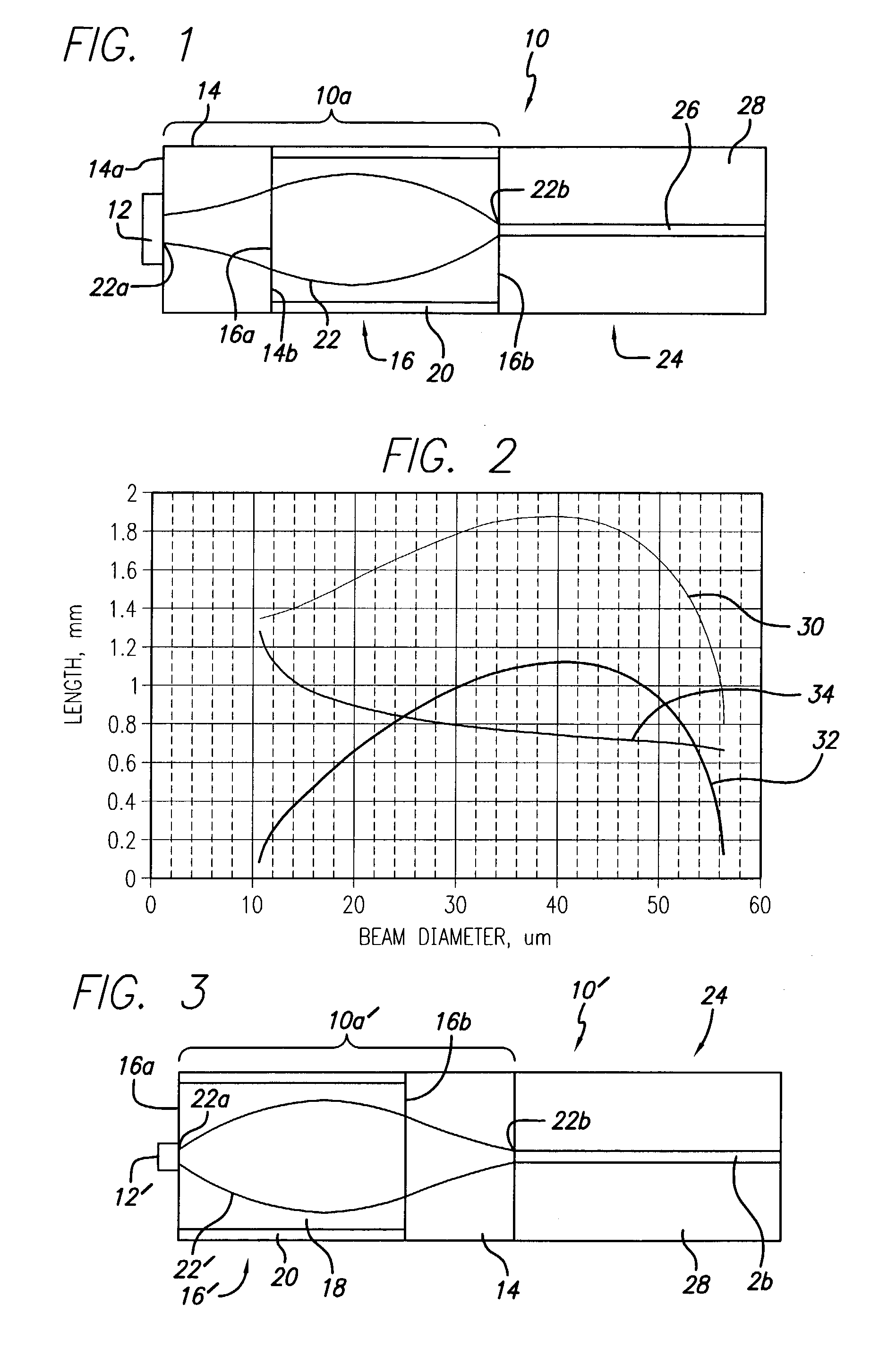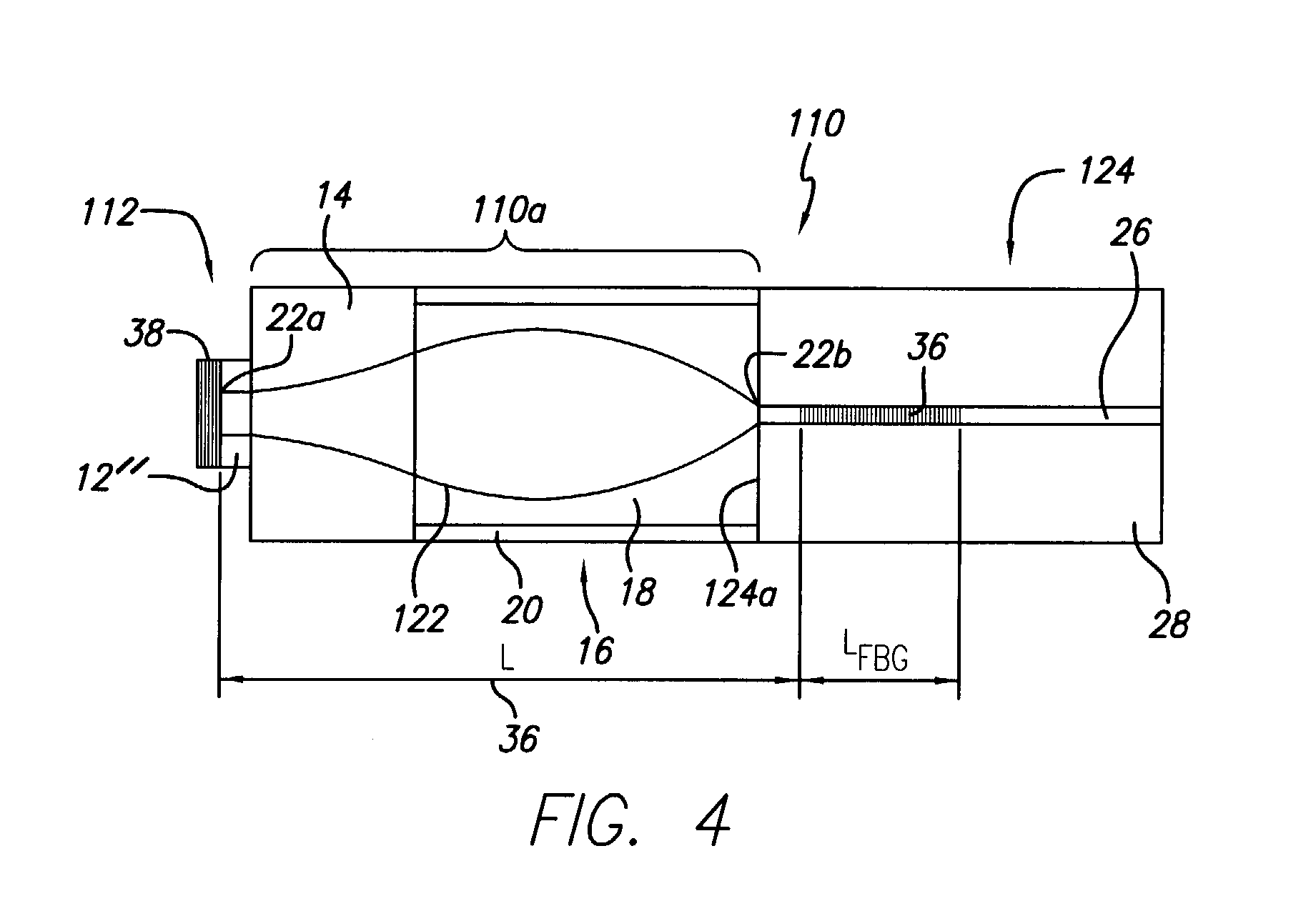Fiber-coupled vertical-cavity surface emitting laser
a technology of fiber-coupled vertical cavity and laser, which is applied in the direction of semiconductor lasers, instruments, optical elements, etc., can solve the problems of relative complex fabrication and alignment, device susceptible to potential misalignment, thermal effects, shock and vibration, etc., and achieves single-mode operation and increased mode field diameter
- Summary
- Abstract
- Description
- Claims
- Application Information
AI Technical Summary
Benefits of technology
Problems solved by technology
Method used
Image
Examples
first embodiment
[0049] In the first embodiment, the size of the Gaussian beam 22 of the VCSEL 12 is larger than the mode size of the single-mode fiber 24. The sizes of the VCSEL 12 that can be coupled to the single-mode fiber 24 in this arrangement range from mode size of the single-mode fiber to the maximum beam size in the multi-mode fiber lens 16. The latter is the size of the beam that would be emitted from the end of a 1 / 4 pitch multi-mode fiber 16 if it were illuminated from the single-mode fiber 24 serving as the light source. This maximum beam size is defined by the properties of the multi-mode fiber lens 16, specifically, by the radial profile of the refractive index, or the numerical aperture (NA) of the multi-mode fiber. For lower values of the numerical aperture, the diameter of the Gaussian beam 22 in the multi-mode fiber lens 16 is larger, which widens the range of possible sizes of the VCSEL 12; however, more light energy from the "wings" of the Gaussian beam 22 is lost in the claddi...
second embodiment
[0053] In the case where the VCSEL 12' has a mode diameter smaller than that of the single-mode fiber 24, then the coupler 10a' may be used, shown in FIG. 3. In this case, the assembly 10' comprises the VCSEL 12' attached to one end 16a of the multi-mode fiber lens 16 by any conventional means. The other end 16b of the lens 16 is attached, preferably fusion spliced, to the pellet 14. The pellet 14 is attached (preferably, fusion spliced) to the single mode fiber (SMF) 24 that receives the optical signal from the VCSEL 12'.
[0054] The structure of the coupler 10a' differs from the first embodiment by the reversed positions of the pellet 14 and the multi-mode fiber lens 16. As a general rule, the lens 16 is adjacent the VCSEL 12' with the smaller Gaussian beam 22' size, whereas the pellet 14 is adjacent the VCSEL 12 with the larger Gaussian beam 22 size.
[0055] The numerical aperture of the multi-mode fiber lens 16 will limit the minimum beam size of the VCSEL 12' in the second embodime...
PUM
 Login to View More
Login to View More Abstract
Description
Claims
Application Information
 Login to View More
Login to View More - R&D
- Intellectual Property
- Life Sciences
- Materials
- Tech Scout
- Unparalleled Data Quality
- Higher Quality Content
- 60% Fewer Hallucinations
Browse by: Latest US Patents, China's latest patents, Technical Efficacy Thesaurus, Application Domain, Technology Topic, Popular Technical Reports.
© 2025 PatSnap. All rights reserved.Legal|Privacy policy|Modern Slavery Act Transparency Statement|Sitemap|About US| Contact US: help@patsnap.com



